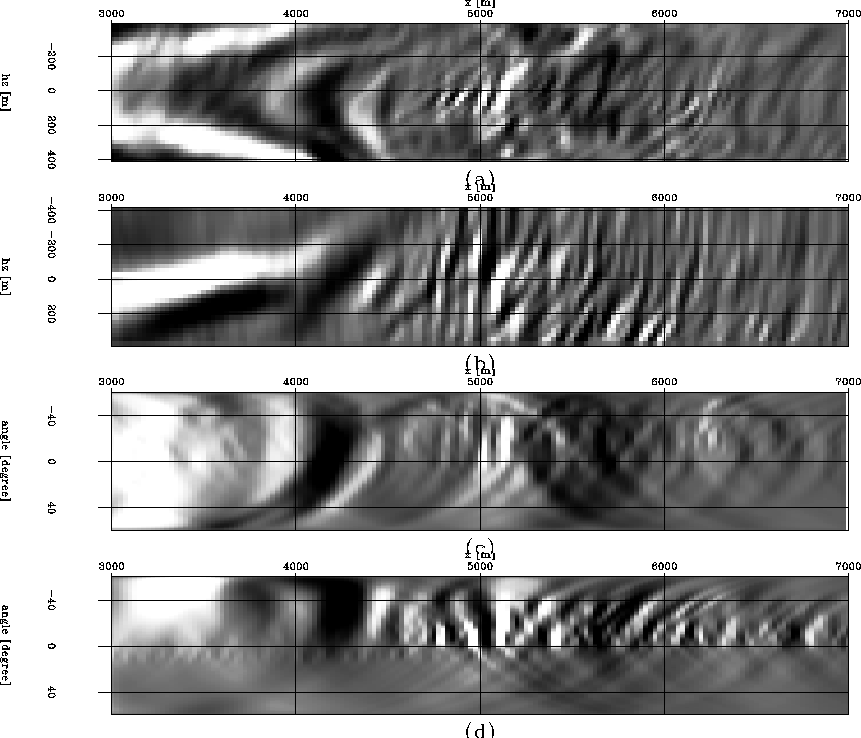




Next: Acknowledgments
Up: Shan and Biondi: Tilted
Previous: Examples
We image the overturned waves by decomposing the source and receiver wavefields into plane waves.
Each plane wave is extrapolated in tilted Cartesian coordinates.
Offset-domain CIGs are generated by cross-correlating the source and receiver wavefields,
with a shift in the direction normal to the extrapolation direction.
The offset-domain CIGs are decomposed into horizontal and vertical CIGs,
which are merged into robust, dip-dependent ADCIGs.
We apply our method to a North Sea dataset and compare the image with the ones obtained
from downward continuation and reverse-time migration.
The image obtained by plane-wave migration in tilted coordinates is better than the image obtained from
standard downward continuation.
The steeply dipping salt edge is imaged by one-way plane-wave migration in tilted coordinates, but
it is missing in the image obtained by downward continuation.
The plane-wave migration results are also comparable to those obtained by reverse-time migration and
produces similar horizontal and vertical CIGs, while its computational cost is much less than reverse-time migration.
The dip-dependent ADCIGs merged from horizontal and vertical CIGs are robust and provide useful moveout information
for reflectors with a wide range of dips.
elf.hz.cig
Figure 6 Vertical CIGs at z=1850m: (a) offset domain CIGs obtained
by reverse-time migration; (b) offset domain CIGs obtained by plane-wave migration in tilted coordinates;
(c) ADCIGs obtained by reverse-time migration; (d) ADCIGs obtained by plane-wave migration in tilted coordinates.
|
|  |

ang.image.elf.dip
Figure 7 Dip-dependent ADCIGs: Notice that both
horizontal and vertical reflectors are focused very well.






Next: Acknowledgments
Up: Shan and Biondi: Tilted
Previous: Examples
Stanford Exploration Project
5/23/2004

